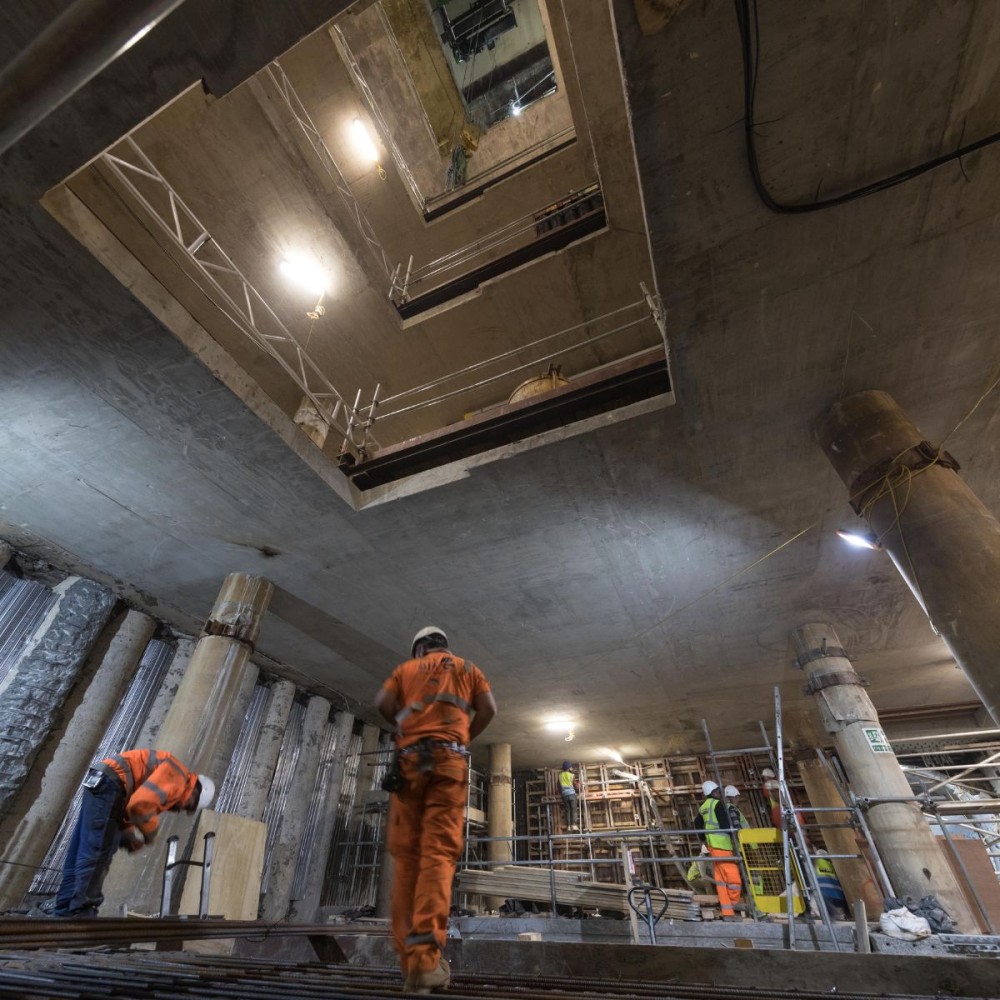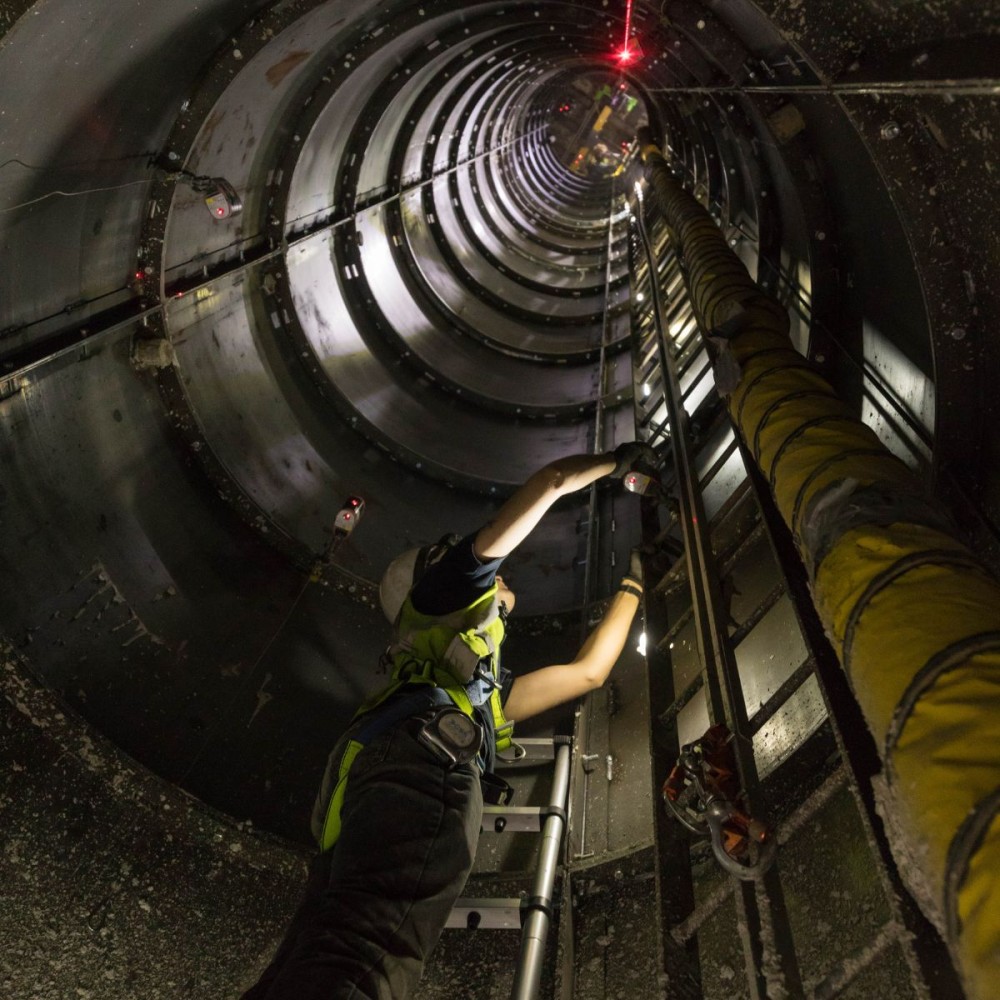Back in the day, when it was time to burn the school tie and choose a career, we 16-year-olds weren’t exactly encouraged to think big. Thankfully, things are little different today. Our school leavers and university graduates are a different breed to those back in the 70s. They know what they want, and they’re encouraged to achieve their goals.
Plumber or solicitor?
Two generations ago and way before that, students were told that “if you don’t work hard, you’ll end up a *plumber” (*Insert trade here). The irony being that today, trades have become extremely lucrative professions and form part of an exciting sector – that of the construction industry. Yet, myths surrounding construction are creating an uninterested graduate community resulting in a lack of skilled labour – misconceptions that it’s a dirty environment to work in, it’s boring, it’s noisy, it’s unexciting, it’s just buildings.
Wrong… It’s mega.
So mega in fact, that BBC2’s recent documentary following the seven-year build of a five-storey basement extension and four-storey rooftop extension at London’s (and probably the world’s) most exclusive hotel, Claridge’s, is titled…The Mayfair Hotel Megabuild.
Over to you Claridge’s…
Claridge’s takes opulence to the next level
This project was something like the ‘bad guy’s’ secret subterranean headquarters in a James Bond movie. Almost unachievable. So much so that Claridge’s owners were finding it difficult to find a contractor to take it on. Thankfully, one Irish expert came out of retirement to make it all happen. Not a secret agent… but Mackey…Jim Mackey. And with a team of miners, also from the Emerald Isle, together with geotechnics and structures consultant Arup, he pulled it off.
It all started back in 2015 when the owner of London’s iconic Claridge’s hotel in Mayfair, hired Jim Mackey of McGee Engineering to create a five-storey basement beneath the 1930s wing of the Victorian hotel. (It actually began in 2007 but the economic crash of 2008 meant plans had to be shelved).
How hard could it be?
The astonishing feat took unimaginable engineering excellence and ingenuity which included hand-digging 62 shafts five-storeys deep within the London clay. The shafts were then clad with multiple 1.8m diameter steel caissons. Then filled with reinforced concrete to form the columns supporting the reinforced concrete raft. Which, in turn, supported the Grade II Listed Art Deco hotel wing above. Each column head was constructed with twin hydraulic jacks, transferring the existing column and raft loads through the new columns and down to the foundations.
It took seven years to complete.
Soil threatens build
The concept had been to tunnel beneath the existing reinforced concrete raft supporting the Art Deco wing through grout-injected soil; driving shafts from these tunnels down into the London clay below – before casting new columns to enable top-down excavation of basement levels one to five. However, the underlying soil was like a saturated flour going to a sand-like consistency, with some clay content and with similarities to pulverised fuel ash (PFA). And with the River Tyburn running alongside, the soil was too wet to be able to support the tunnelling.
After trips all over the world to find a solution, McGee and Arup embarked on some on-the-fly soil testing. “We had a small quantity of this material that we effectively dried out,” explains Mackey (McGee). “I put mine [in a mug] on the shelf near the window in the summer sun for a couple of days, only to find when I returned to it, it had solidified. From that fairly basic experiment we now knew that if we could get the water out then we could change the properties of this material such that we could excavate tunnels through it.”
Dinesh Patel (Arup) adds: “It’s a bit like building a sandcastle. When the sand is dry, you can’t build a castle but, when it’s wet, you can because the surface tension between the particle sizes is trying to keep the particles intact. So, drain out just enough water and it goes into surface tension, the particles stay intact, and you can build the sandcastle.”
To close the hotel to paying guests wasn’t an option, therefore, heavy machinery couldn’t be used. To ensure guests weren’t disturbed Mackey used the expertise of miners to manually dig out the clay. The miners worked in 12-hour shifts to ensure ‘round-the-clock’ progress under the project management of Mackey’s daughter, Michelle.
Only once the first storey had been manually excavated, could machinery be lowered into the basement to complete the remaining four storeys – which would take a year to excavate even with the heavy plant. To make matters yet more challenging, all excavated material, all supplies, and – perhaps more remarkably – all equipment, had to be brought in through a rear window and through the raft aperture. Absolutely no evidence of the project was allowed to be seen in the hotel.
100,000m³ of material was excavated.
Even in linear-metre terms, a mole would take 13 and a half years, digging 24-hours a day to remove that much earth. And even then, it would take five moles given a mole’s lifespan is around three years.
And, to protect the structure, real-time monitoring and the facility to jack ground settlements or heave was established at each column location to protect the 30,000 tonne hotel above.
Imagine if that dropped on your big toe.
More guests require more room – and a grand piano
The idea behind the change was that to truly retain the hotel’s mantle as the finest among the city’s best, it not only needed extra suites for a growing guest portfolio, but needed to create new amenities such as Claridge’s first ever spa. Accompanying the spa in gracing Claridge’s with 21st century luxury, would be a gym with a suspended swimming pool, a restaurant and retail space on basement level one. Basement level two would contain a swimming pool and meeting rooms; and operational space for hotel services, including food preparation would be on basement level three.
Plant rooms located at the top of the hotel would be moved to basement levels three and four. This would free up space at the top of the hotel for up to 40 new rooms, with prime new penthouse suites among them – which also includes the jewel in Claridge’s crown – a penthouse spanning the whole of the roof and featuring its own pool, gym, lake and lakeside glasshouse complete with grand piano.

Images courtesy of Maybourne Hotel Group

Arup tests to give the go-ahead
With Arup on board, along with the tenacity and inventive nature of its team, the gargantuan task of getting the basement extension started (let alone finished) was made possible. Soil testing, concrete testing, load testing, site level testing, movement tolerance testing… it all had to be done. This was a build that was at the mercy of two listed buildings – buildings that continued to be fully functional throughout the works. Working closely with Project Manager Michelle Mackey and Contract Engineer Jim Mackey, the teams were able to complete the project while guests dined, slept, and celebrated completely unaware of the behemoth below.
Why stop at a multi-million-pound luxury basement extension?
As if Claridge’s hadn’t gone through enough with its now burgeoning basement project, there were changes afoot on the roof running simultaneously.
Exit stage…err…south, McGee and enter stage north, Setanta Construction.
Led by company directors Mark and Niall Gribbin, Setanta Construction specialises in off-site construction – shifting many aspects of building activity away from traditional construction sites.
To create the new guest rooms and floors in the Victorian roof, 100 new dormers had to be built. Not your average semi-detached house dormer, but structures featuring Victorian detailing, traditional brick set as it was when the building was first built, French doors and ornate balconies… And nearly as big as a semi-detached house!
To speed up construction and to alleviate any congestion on the roof, the dormer project was constructed, fabricated and tested for fit by building a mock roof off-site… in Ireland.
Setanta manufactured the large building components which were designed and completely constructed at the factory in Magherafelt. This wasn’t a typical fabrication project. Each brick was laid as would have been during the Victorian age, each balcony rail hand turned, and every finial and flourish made to fit each dormer perfectly. Only two dormers at a time could be transported by flatbed lorry given their enormous size – and only then once they had reached the shores of England via ship, before being delivered and installed on-site as a complete unit on the roof structure at Claridge’s.
And not a single double-glazing salesman in sight.
Mark Gribbin said: “As a local small business, we’re proud to have been involved in such a prestigious project for one of the most recognised hotel brands in the world.”
Original heating and utilities plant were also removed and housed in Basement level three. Leaving space to build London’s most elegant and expensive guest penthouse. It may not be for you if you suffer from vertigo or indeed prices that would make even Rishi Sunak’s eyes water.
The Guest Penthouse will cost you around £100,000 per night.
But where do you put a crane for 7 years in the middle of Mayfair?
Of course, the answer’s obvious… isn’t it? Simply make a hole in the centre of a Grade 11 Listed Victorian hotel and just drop the crane into that. Job done!
Once again, nothing is simple. Though not the level of conundrums faced for the basement project, having a crane sat on a Mayfair Street wasn’t something the City of Westminster Council was ever going to pass.
Cue the guys putting their heads together for more scientific brilliance.
First, service lifts were removed from their shaft and unnecessary components removed. However, vital utilities pipes and cabling needed to be saved as they serviced the hotel with power and water.
The static crane was hauled up toward the London sky and carefully manoeuvred down the shaft and secured at the base of the building. On the other side of the shaft wall, guests and hotel life carried on as normal.
Next time you’re out and about in any city, look up at the size of the cranes and you’ll realise just how mad, yet impressive, this task was.
Celebrating Victorian nuances and interior design for the 21st century
It’s difficult to imagine the level of luxury at Claridge’s, but I’m certain Lenny Henry won’t be talking about it. However, complementing both exquisite facades of Claridge’s Hotel – one Victorian, one Art Deco – interior designers and architects were commissioned to deliver the impossible… make Claridge’s even more luxurious.
The new mega basement features Claridge’s new 7,000 square foot spa with steam room, pool, sauna and seven beauty treatment rooms. It’s staggering detail and sumptuous beauty is the work of Hong Kong interior architect André Fu, long-time Maybourne Hotel Group collaborator, whose creations range from an original furniture creation for Louis Vuitton’s exclusive Objets Nomades collection, contemporary art galleries in Hong Kong, Tokyo and Shanghai for international gallerists including Emmanuel Perrotin, and major hotels and restaurants around the world including Villa La Coste, in Provence; The Berkeley London; Hong Kong’s St Regis Hotel; The Mitsui Hotel in Kyoto, and The Upper House Hotel in Hong Kong.
Premier Inn will have to join the queue.
Construction in a nutshell
The Claridge’s basement and roof extension case study is exceptional, truly ground-breaking, not just for the finished article, but moreover the heart and soul that went into achieving it.
Architects designing a plan that would enable the space to be achieved without the luxury of a streetside extension. Miners digging through clay in 12-hour shifts for nearly two years. Geotechnic and tunnel experts wading through equation after equation to ensure every part of the process was safe. Project managers planning every day to keep the project on schedule whilst ensuring hotel guests were always unaffected by noise or vibration. Contract engineers who problem-solved on-the-fly while cement was pouring through open gaps and drains flooded completed basement rooms. Interior designers who had to make every new guest room unique, and create a showstopper penthouse that wore the crown for not only the finest in London, but the finest in the world.
All these people made this happen.
And the most rewarding part for them is, and will always be, that whenever Claridge’s remarkable extensions are mentioned, or whenever they walk or drive past this elegant of hotels, each and every one of them can say, “I did that.”
Construction isn’t about buildings. It’s about being a part of making them a reality. Achievement that’s truly exciting.
You can watch the full series of The Mayfair Hotel Megabuild now on BBC iPlayer.
All images courtesy of Maybourne Hotel Group
1: New Civil Engineer / January 2023
References from BBC, Mail Online, New Civil Engineer and Construction News.










